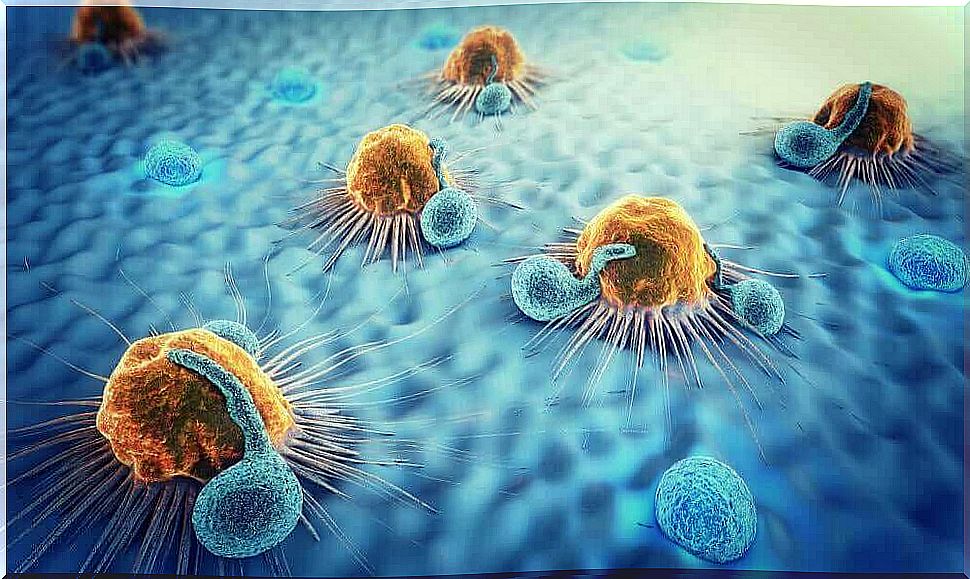Benign And Malignant Tumors: What Is The Difference Between Them?

What distinguishes benign and malignant tumors ? Malignant tumors are able to spread to other parts of the body through a process called cancer metastasis.
Nowadays, practically everyone of us is afraid that he may develop benign and malignant tumors . Cancer is one of the leading causes of death in the world today. Therefore, it is perfectly normal to feel such anxiety.
However, you need to be aware that not all tumors are cancer. The term tumor refers to a group of cells from any tissue in our body that have grown out of control and turned into a diseased mass.
Given the scale and importance of this problem, today’s article will outline the main differences between malignant tumors and benign tumors.
What distinguishes benign and malignant tumors?
Both malignant tumors and benign tumors are lesions that must be examined by a group of doctors. Besides, both of these types require appropriate treatment. Appropriate therapies should be used to avoid possible complications or even greater problems in the future.
Malignant tumors are distinguished from benign tumors mainly by their growth. In both cases, cells multiply uncontrollably. However, in benign tumors, they do not spread to other parts of the body.
Benign tumors are not intended to be life-threatening. However, there is a nuance here: when they get too big and put pressure on nearby organs, they can affect them. In such cases, it becomes necessary to delete them.
In malignant tumors, cells have the ability to spread to other areas of the body. Moreover, they also proliferate in these new areas in a process called metastasis. Such metastases can be formed by moving to adjacent areas, through the blood, or through the lymphatic system.
This is how a malignant tumor usually spreads and causes tumors to develop in other parts of the body as well. Benign tumors, on the other hand, usually do not spread because their cells are surrounded by a membrane that limits them.

Another aspect that makes it possible to distinguish a malignant from a benign tumor is the variety. Diversity refers to the number of cells in a tumor that resemble the original healthy tissue:
- In malignant tumors, the cells look very little or no resemblance to the original cells. This makes it possible to distinguish the stages of cancer development.
- In turn, in the case of benign tumors, the cells resemble those of healthy tissue.
You should also be aware that a benign tumor usually grows more slowly than a malignant tumor. It may even stop growing. This is not the case with malignant tumors.
What is cancer diagnosis?
The sooner a tumor is diagnosed, the more likely the treatment is to be effective. That is why it is so important to raise awareness. Self-examination for nodules or lesions is one of the main ways to detect a tumor early. But don’t go overboard!
In addition, regular check-ups with a doctor play a key role. After reaching a certain age, regular general health checks are recommended. Thanks to such tests, it is often possible to detect a developing tumor early. For example:
- It is very important that women have a mammogram once a year to rule out breast cancer.
- In the case of men, prostate examination during digital rectal examination plays a significant role .
- In addition to early detection, there are other techniques that can diagnose cancer that is in a more advanced stage. The location and size of the tumor can be found with imaging tests, such as computed tomography. Magnetic resonance imaging is also very useful.
However, the only way to examine a tumor in any particular way is to take a biopsy, which can examine a portion of the tumor. Under the microscope, you can observe the behavior of the cells that make it up. This allows you to know the degree of differentiation and the speed of multiplication.

How are benign and malignant tumors treated?
Treatment depends on the type of tumor, its location, size, etc. Most benign tumors can be removed during surgery. What’s more, they usually don’t require radiation or chemotherapy.
On the other hand, treatment of malignant tumors is usually more complex. Mostly it involves combining surgery with cycles of radiotherapy or chemotherapy, and sometimes even both. This is done to make sure all malignant cells are removed from every part of the body.
Summary
Early detection plays a key role in any tumor . This will allow you to choose the most effective therapy. This is important because although benign tumors are not life-threatening, early detection protects against possible complications later in life.









